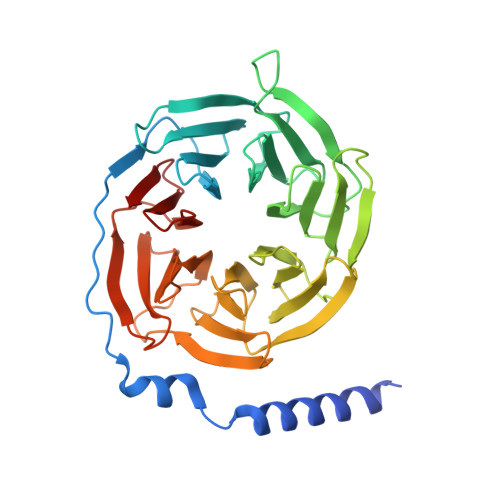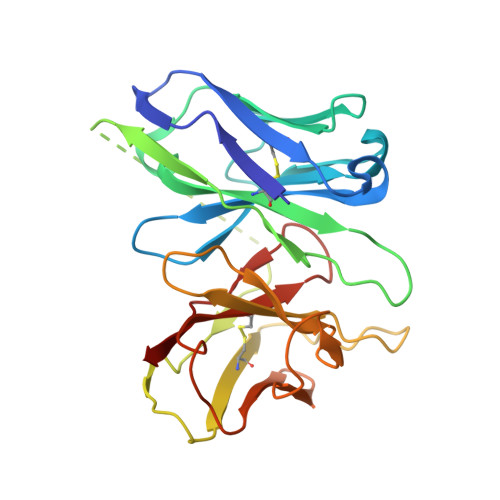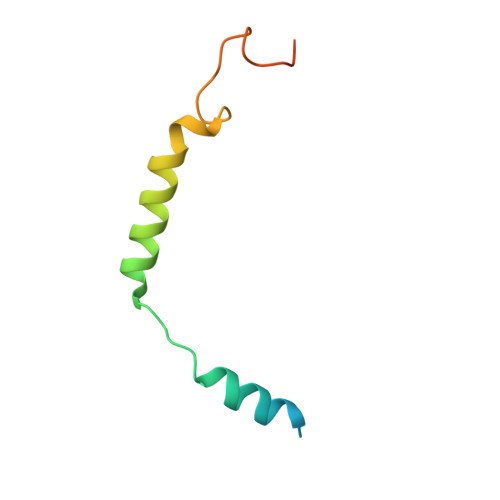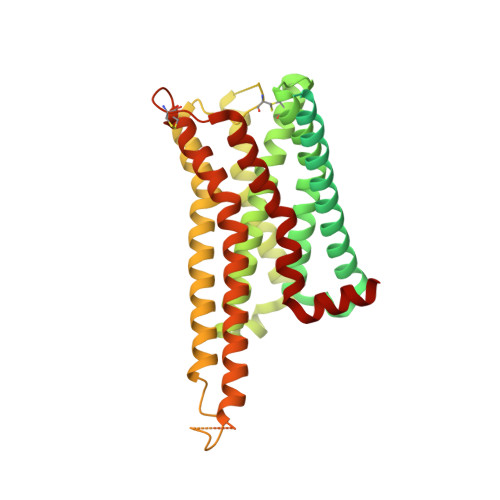Structural insights into the lipid and ligand regulation of serotonin receptors.
Xu, P., Huang, S., Zhang, H., Mao, C., Zhou, X.E., Cheng, X., Simon, I.A., Shen, D.D., Yen, H.Y., Robinson, C.V., Harpsoe, K., Svensson, B., Guo, J., Jiang, H., Gloriam, D.E., Melcher, K., Jiang, Y., Zhang, Y., Xu, H.E.(2021) Nature 592: 469-473
- PubMed: 33762731
- DOI: https://doi.org/10.1038/s41586-021-03376-8
- Primary Citation of Related Structures:
7E2X, 7E2Y, 7E2Z, 7E32, 7E33 - PubMed Abstract:
Serotonin, or 5-hydroxytryptamine (5-HT), is an important neurotransmitter 1,2 that activates the largest subtype family of G-protein-coupled receptors 3 . Drugs that target 5-HT 1A , 5-HT 1D , 5-HT 1E and other 5-HT receptors are used to treat numerous disorders 4 . 5-HT receptors have high levels of basal activity and are subject to regulation by lipids, but the structural basis for the lipid regulation and basal activation of these receptors and the pan-agonism of 5-HT remains unclear. Here we report five structures of 5-HT receptor-G-protein complexes: 5-HT 1A in the apo state, bound to 5-HT or bound to the antipsychotic drug aripiprazole; 5-HT 1D bound to 5-HT; and 5-HT 1E in complex with a 5-HT 1E - and 5-HT 1F -selective agonist, BRL-54443. Notably, the phospholipid phosphatidylinositol 4-phosphate is present at the G-protein-5-HT 1A interface, and is able to increase 5-HT 1A -mediated G-protein activity. The receptor transmembrane domain is surrounded by cholesterol molecules-particularly in the case of 5-HT 1A , in which cholesterol molecules are directly involved in shaping the ligand-binding pocket that determines the specificity for aripiprazol. Within the ligand-binding pocket of apo-5-HT 1A are structured water molecules that mimic 5-HT to activate the receptor. Together, our results address a long-standing question of how lipids and water molecules regulate G-protein-coupled receptors, reveal how 5-HT acts as a pan-agonist, and identify the determinants of drug recognition in 5-HT receptors.
Organizational Affiliation:
Department of Biophysics and Department of Pathology of Sir Run Run Shaw Hospital, Zhejiang University School of Medicine, Hangzhou, China.




















